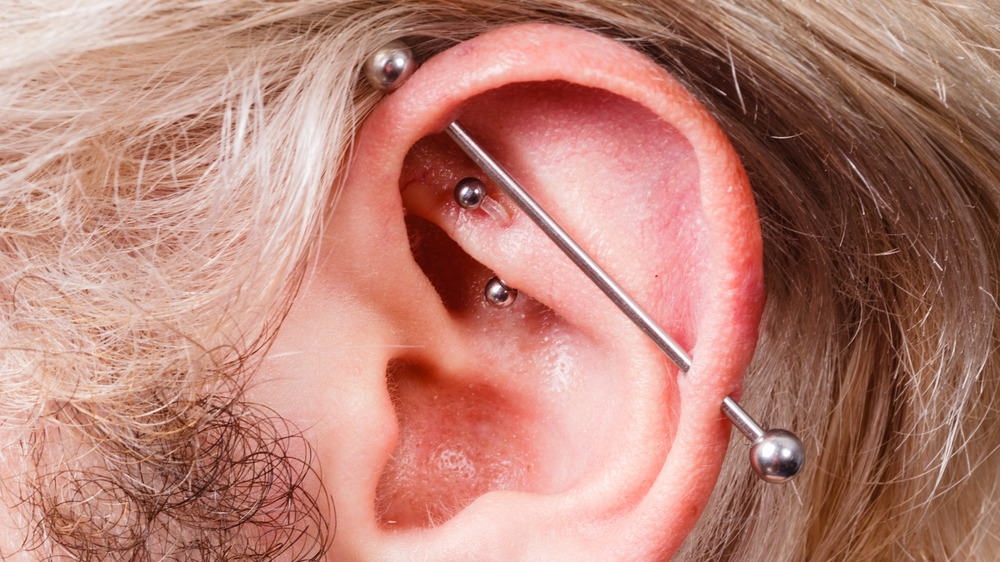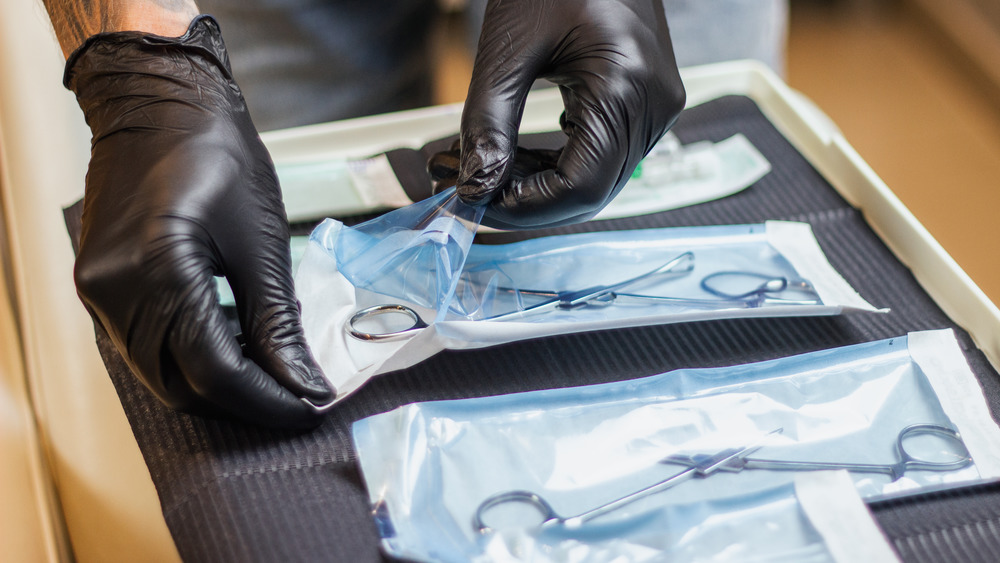Read This Before You Get An Industrial Piercing
A piercing may not be as permanent as a tattoo, but it would be wise to make sure you absolutely want one before booking an appointment and exposing yourself to the discomfort or potentially horrific pain. Despite the "ouch" factor, humans are drawn to body modifications and have been making holes in their skin for the last 5,000 years (per Marie Claire). Many people know what having pierced lobes feels like, but what about if you want to pierce another part of the ear? Here's what you should know about getting an industrial piercing.
Atlanta-based piercer Cozmo Faris describes the body mod, explaining, "[An] industrial piercing is a broad term generally used to describe any two piercing connected by a single barbell," (via Byrdie).
Before you go into the studio to get an industrial piercing, make sure that you are healthy, hydrated, and have eaten a blanched meal to avoid the risk of fainting. It is also important to do your research on what type of barbell you want to use. There are many different sizes made from a variety of metals such as gold or titanium. To avoid an allergic reaction or a prolonged healing time, choose a metal that you know you are not allergic to (via YouTube).
Preparation is key
If you are interested in an industrial piercing, you would be surprised to find out it may not be possible. "Most people do not have the right anatomy to get a traditional industrial piercing," explained Sydney, Australia-based piercer Eden Cox (via Byrdie). "That's why it's important to research your piercer and find one that will work with your anatomy and do something suitable for the shape of your ear."
If you've done your research and met with a piercing professional to find out that you are a good candidate for an industrial piercing, then congratulations! But just because you have the right ear shape doesn't mean you aren't exempt from possible post-piercing infection.
The typical healing time is between four to six months. It's important to avoid playing with or removing the barbell when the piercing is new. A good tip is also to clean the area properly with a cloth or sturdy paper towel instead of a cotton swab. It's suggested that you soak the cloth in saline and clean thoroughly around the area at least three times a day without being too aggressive. However, be sure to not let any crust get hang behind (via Healthline).
When you decide to rock the not-so-traditional ear piercing, make sure you book a consultation first, go to the studio prepared, and be ready to spend the time needed to avoid possible infection.

